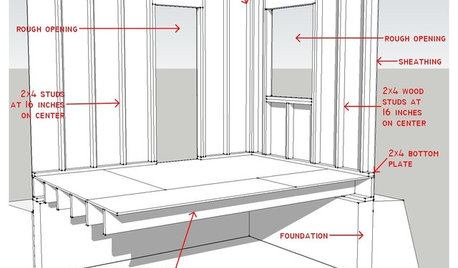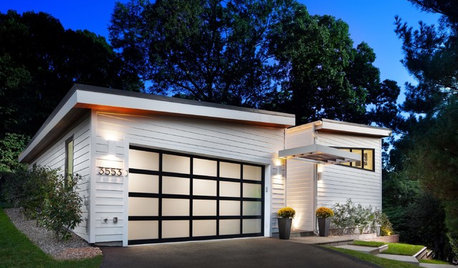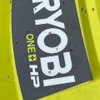The Tecumseh, and formerly the Lawson carburetor has remained basically the same for decades. They were used on a wide application of small equipment. Unless they become severely corroded, they can be rebuilt with a minimum of parts and last almost indefinitely. 99% of all the Tecumseh carburetors I've ever worked on were easily rebuildable with the replacement of the bowl O ring, a Welch plug and a good cleaning. Over the years, jet styles have changed, but these overhaul directions will satisfactorily cover every variation of this basic carburetor.
Always work safely when using compressed air, parts cleaners and gasoline. Proper safety equipment should be used and adherence to all safety standards is required.
The subject of our overhaul is a commonly used Tecumseh carburetor that is varnished from fuel being left in a tank with no shut-off valve. This carburetor model seems susceptible to this type of damage more than any other manufacturers carburetor. Seen from the air filter end.
{{gwi:132067}}
The gas tank has been emptied and the fuel and vent lines have been removed.
{{gwi:132068}}
Note the governor linkage at point A. Scribe a mark on the throttle plate at the hole where you will be removing the one end of the linkage. Make a mark on the end of the linkage that inserts into the throttle plate. Before removing the linkage, the carburetor must be unbolted from the manifold.
One carburetor mounting bolt is shown at point B. A large Phillips screwdriver, 3/8" wrench, or socket can be used to loosen the bolt. In this case, only the Phillips could gain access to the one bolt. Always loosen the bolt, not the nut, whenever a bolt and nut are used in combination.
The Welch plug is shown at point C. There are two Welch plugs used in this carburetor. This one is removed, the other is generally not removed.
At point D, you will see a white nylon cap covering the idle air jet. This must be removed with a pick type tool. The cap is pushed over the end of the jet and pulls straight out. In older carburetors, this was where an adjustable idle air screw was located.
Remove the carburetor.
{{gwi:132069}}
The bowl nut is located on the bottom of the bowl. This is the main jet. In older carburetors, this was an adjustable jet. Use a ½" socket to remove it. When re-installing the bowl nut, it is not necessary to severely tighten it, which could cause it to break.
{{gwi:132070}}
The varnish is apparent.
{{gwi:132071}}
Place the carburetor in a vice. If you are working on an older carburetor with a choke plate, be sure the choke is closed before clamping it in the vice. There needs to be enough vice clamp pressure to keep the carburetor in place while using a sharp chisel and hammer. Hold the chisel at an angle. The goal is to puncture the Welch plug so that a small screwdriver can be used to lever out the plug. If you are too aggressive with the chisel, you can damage the surface area below the plug, which is about 1/8" below the surface of the plug.
{{gwi:132072}}
A screwdriver is used to lever out the Welch plug. Directly below the Welch plug is the idle air jet. Use the same screwdriver to unscrew it. It may be snug.
{{gwi:132073}}
The jet, removed from area B, is shown at point A. Note the top opening and just below it, another hole. The jet orifice in the top of the jet is about the size of a human hair. All orifices must be clear of varnish.
{{gwi:132075}}
There is no alternative with this carburetor. It must be soaked in a carburetor dip tank. NAPAÂs product, shown here will clean most carburetors in 10 minutes, after which, they can be washed with warm water and dried with compressed air. It is important to clear all passageways with air. In the case of this carburetor, it had to be dipped for two 15 minute intervals because the varnish was too thick.
Warning: This cleaner is very potent. It can cause damage to rubber or nylon parts (fuel elbow) if left in too long. Limit your soaking time to 15 minutes max.
{{gwi:132076}}
After soaking, manually check that the small orifice in the main jet is clean, using a torch tip cleaner.
All parts can now be final-cleaned, using Carburetor Cleaner and compressed air.
{{gwi:132079}}
The carburetor float needle seat is located at point A. ItÂs a good time to replace the seat. The tool is shown below to remove and reset the new seat. The new seat is installed with the smooth side facing towards you, when looking into the hole.
{{gwi:132080}}
Note the positions of the bowl and the float pin. The flat surface at point A of the bowl, goes directly over top and in line with the float pin at point A of the carburetor body. Install the new float bowl gasket and secure the float bowl with the bowl nut. Do not overtighten the bowl nut.
{{gwi:132081}}
Place the carburetor body back into the vice. Using a round "tool" with the same diameter as the Welch plug, place the plug into point C with the convex surface facing outward and with light taps of a hammer, depress the center of the Welch plug so it expands outward. Do not try to flatten the center of the plug. I always use nail polish, lacquer, to seal around the edges of the plug.
Note the 5 orifices at point C. Older carburetors had less. The 4 holes a point C, go directly into the throttle body. The orifice at the 5 oÂclock bottom position angles down to the idle air jet. Be sure all orifices are clear of varnish. Use carburetor cleaner. Even though these orifices are very small, a carburetor will not function properly if they are even partially obstructed with varnish.
{{gwi:132082}}
Shown here is the installed Welch plug and idle air screw protective cover.
{{gwi:132083}}
The carburetor is now ready to be reinstalled. Attach the linkage first and then bolt the carburetor to the flange. If necessary, replace the mounting gasket. Do not overtighen the mounting bolts. Snug, and a little more, is all that is necessary.

















tomplum
baymeeOriginal Author
Related Professionals
Bridgetown Landscape Architects & Landscape Designers · Woodinville Landscape Architects & Landscape Designers · Aurora Landscape Contractors · Columbine Landscape Contractors · Fairfield Landscape Contractors · Framingham Landscape Contractors · Kahului Landscape Contractors · New Berlin Landscape Contractors · Pomona Landscape Contractors · East Norriton Landscape Contractors · Holliston Carpenters · Rantoul Carpenters · St. Johns Carpenters · Sunnyvale Carpenters · Wentzville Carpenterstomplum
1saxman
ewalk
baymeeOriginal Author
ewalk
tomplum
jonnyaldaz
tomplum